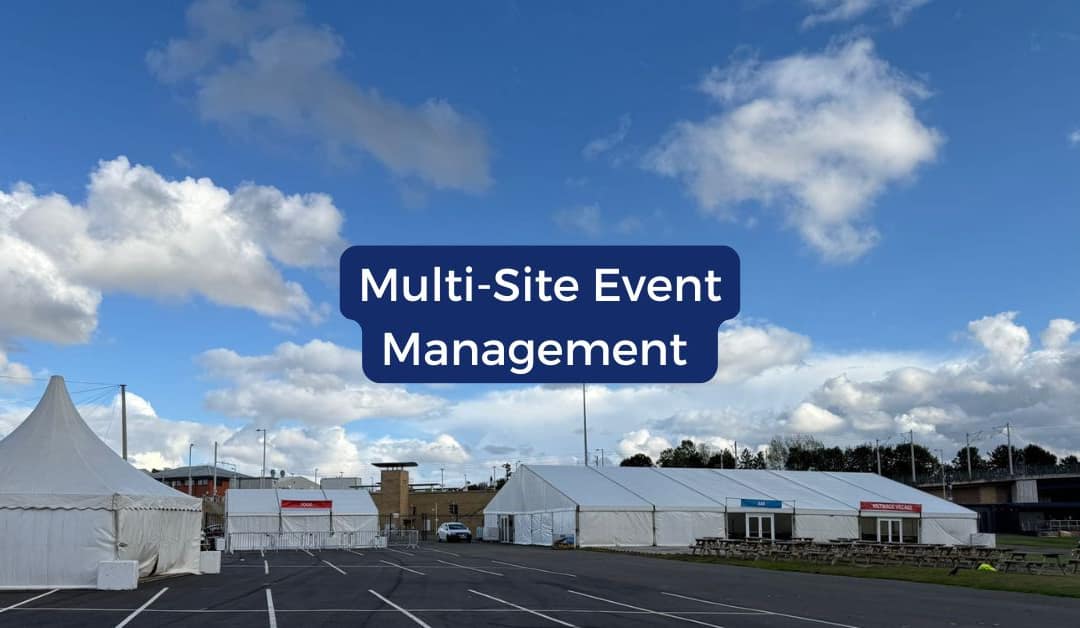I sometimes think managing a single outdoor event is like playing chess, but managing multiple sites at once is more like playing several boards simultaneously while the weather, the ground, the council, and the traffic are all trying to knock the pieces over.
You don’t forget the first time you stand between two live sites, radio buzzing on one hip, phone vibrating in the other, and a supplier at the gate asking if the access route has changed. There’s a point where you stop managing a build and start conducting. Not frantically, not loudly, but with a rhythm, a calm pulse that says, everything is moving because it’s supposed to be moving.
And when you step into that way of working, something changes. You stop thinking in terms of individual structures and start seeing systems, logistics, access, welfare, power, safety, comms, all interlinked, all depending on decisions made hours or days earlier.
That’s when you realise multi-site delivery isn’t about scale, it’s about discipline, timing, and trust.
A Tale of Two Fields
Not long ago we supported two major outdoor builds in the same week, one in central Scotland, one north of the border. On paper, both were straightforward. Good lead-in times, experienced clients, seasoned partners. But outdoor events rarely respect paper.
A ground condition change at one site meant a revised anchoring approach.
Meanwhile, a delivery slot at the other shifted due to access restrictions.
Nothing dramatic. No one panicked. But these are the moments where experience speaks louder than any schedule.
We adapted. We deployed crew strategically, brought in additional matting, re-sequenced vehicle movements, and stayed ahead of communications. One site paused for safety, the other surged forward. Not one of the teams missed a beat.
The public saw two smooth builds.
The client saw reliability.
We saw the reality, the unseen work that keeps everything steady.
And that’s the thing about this industry. When it goes right, most people don’t see what you did. When it goes wrong, everyone sees it.
We lean on that knowledge every single day.
Why Multi-Site Events Demand More
Running multiple outdoor events at once isn’t just about capacity. It’s about experience, foresight, and the ability to maintain quality while scaling.
You need:
-
Experienced leads at every site, not just one “hero” project manager
-
Clear communication lines that don’t rely on hope or luck
-
Contingencies built in before the trucks even start their engines
-
Crews who know how to make decisions because they’ve lived consequences
-
Trust — not just between supplier and client, but within the team itself
And most importantly, you need process, because confidence without structure is just noise.
The Quiet Strength
People sometimes ask why Purvis runs the way we do, why we invest in people, in systems, in kit, in knowledge sharing. The answer is simple: stability isn’t accidental.
Anyone can put a marquee up.
Not everyone can deliver two major sites, in unpredictable conditions, with shifting variables, and make every partner feel like they’re your only focus.
That’s the level the big operators in this industry sit at, the ones who understand that temporary structures don’t mean temporary thinking.
We’re proud to stand in that space, not because we shout about it, but because the people who matter see it when we’re on-site.
Your Turn
If you’ve run multiple live sites at once, tell the story. What’s the moment you realised your plan mattered?
Maybe it was the radio silence that meant everything was going right.
Maybe it was the one wind warning that made you rethink your sequencing.
Maybe it was simply the knowledge that your crew could handle anything because they have before.
Whatever it was, share it.
Our industry grows not by guarding knowledge, but by speaking it.
And the more we talk, the stronger the next build, and the next season, will be for everyone who steps onto a field and turns empty space into something extraordinary.

